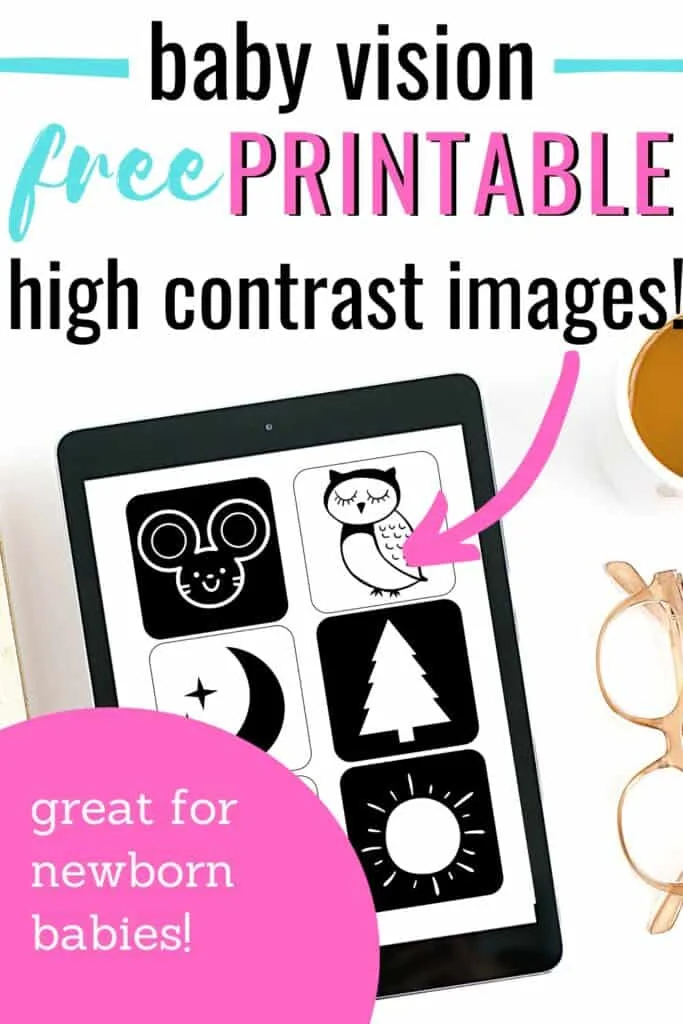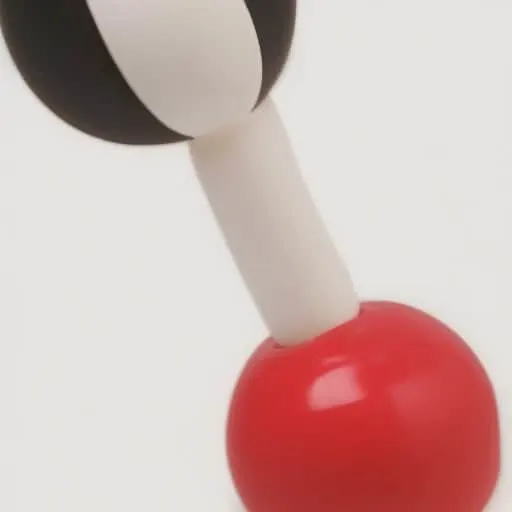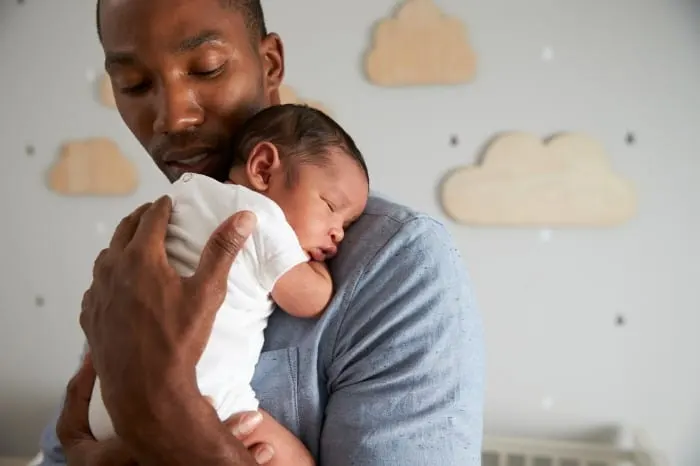The development of your baby’s vision is an amazing process.
Black and white pictures are not only visually stimulating for babies, but they can also help promote the development of essential visual skills.
Plus, they’re just plain cute!
Here are some tips on how to use black-and-white pictures to encourage your baby’s development.
Don’t forget to grab your free set to print in this post!

(This post may contain affiliate links. To read our full disclosure policy click here.)
Why Black and White Pictures are Important for Babies
Have you noticed that many of the toys designed for young babies are oftentimes black, white, and red?
This is because your baby’s vision is not very clear at the early stages of development.
You can find a short video on what it looks like through the eyes of a baby in the first year HERE.
Black and white toys and books are easier for them to see and can be a great way to provide some visual stimulation as your little one’s vision comes in
What are the best black-and-white images to use with your baby?
There are many different ways that you can incorporate black-and-white imagery into your baby’s day using different materials.
From books with bold, simple images to hanging mobiles that feature hypnotic patterns, there is no shortage of options.
You can also find lots of printable black-and-white pictures online that you can hang around the house or in your baby’s room.
I have a free set of high-contrast images that you can download for free and print off and use throughout the day with your baby-click here to download.
You can laminate these images and hang them on the wall next to where your baby gets changed or show them while your little one is doing tummy time.
I even included a short little rhyme so that you can support early literacy and language development when using the cards.

How to Use High-Contrast Images with Your Baby
There are many ways that you can use black-and-white images with your baby from the start.
One thing that you can do is decorate places where your newborn baby will be with a few black-and-white images.
For example, the wall near the changing table can be an excellent spot!
I also like to include them in activities such as tummy time.
If you lay down in front of your little one when they are doing their tummy time you can hold up the images for them to see.
Watch how they respond!
As you watch their cues you can slowly move the black-and-white image or try it in different places to see what happens.
As your baby’s vision comes in you may notice them being able to start to follow the image with their eyes both vertically and horizontally.
You can try this visual tracking activity while they are on their backs as well using a high-contrast image or even a toy.

Black and White Toys for Babies
Choosing high-contrast toys for your baby can be a great way to provide some visual stimulation.
Look for toys with bold geometric shapes, bright primary colors, and high-contrast patterns that will draw your baby’s attention.
There are lots of different toys available for purchase, but you can also get creative and make your own!
Black and White Contrast Rattle Toys
Playing with soft black and white rattle toys is an engaging activity for babies.
They love grabbing and shaking the toy to create their own rhythm and watch the beads move around inside it.
Soft tactile toys are also perfect for developing visual skills, as infants learn about different textures, shapes, and patterns by exploring them with their hands and mouth.
The sound of the rattling encourages auditory development and stimulates even more interest in the activity.
When your baby grabs the rattle, it teaches them important fine motor skills they need in order to start exploring other objects around them.
If you’re looking for a fun toy that entertains your infant while helping to develop their cognitive abilities, then these soft black and white rattles are a great choice!
High Contrast Cards
When it comes to entertaining little ones while out and about, clip-on black and white flashcards can be a great option.
They are lightweight and easy to stash in a bag or pocket when needed.
With no batteries required, these cards may provide your children with fun and learning wherever they go.
The simple black and white images are the perfect way to support your baby’s visual development wherever you may be!
You can take a closer look at these clip-on black-and-white cards here.

Fun High Contrast Books that Support Baby’s Cognitive Development
High-contrast books are a fantastic activity for babies that encourages learning and development.
Detailed images with high contrasting colors help to engage babies’ senses, keeping them engaged and allowing them to focus on the images as they learn.
High-contrast books (like this one) also help to encourage language development, as parents read out words or talk through the pictures while their baby enjoys looking at the colorful pictures.
Best of all, reading these books together helps bond the parent and child, creating an enjoyable experience that is both educational and loving.
Have Fun with Your Little one!
From decorating the nursery to choosing high-contrast toys and books, there are lots of ways that you can use black-and-white images or objects to help stimulate your baby’s cognitive development.
Not only do these activities provide visual stimulation but they also promote language learning, fine motor skills, auditory development, and more!
If you are looking for more ideas and strategies like this make sure to find me on Tik Tok or Instagram!
Frequently Asked Questions
High-contrast images are good for babies because they are easier for them to see and focus on as their vision is still coming in.
Yes! Reading to your baby early on is one of the best things that you can do that encourages hand-eye coordination, cognitive skills, language development, and more!
High-contrast books are a great option for newborn babies as their vision is still coming in and they can see these colors best.
Related Posts You Will Enjoy
When do babies start saying mama?
Best Baby Floor Mats for Crawling
The Best Social Emotional Activities for Infants
When do babies start standing?
Everything You Need to Know about 3-6 Months Cognitive Development


Kayla O’Neill has a master’s degree in education as well as a bachelor’s degree in special education with an emphasis in early childhood education. She has been working as a developmental therapist with babies and toddlers in early intervention since 2012. She is also a mom with two young children.